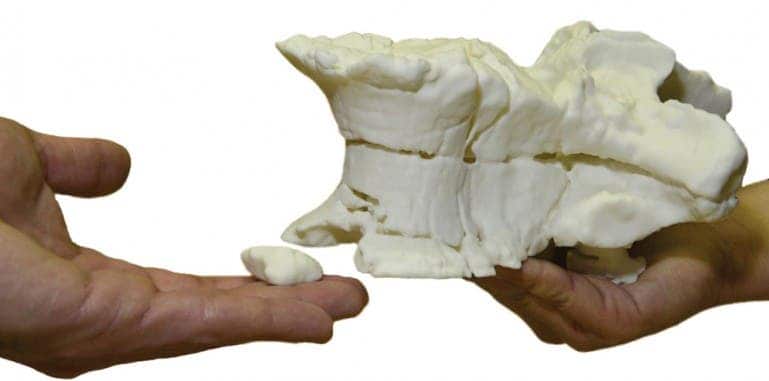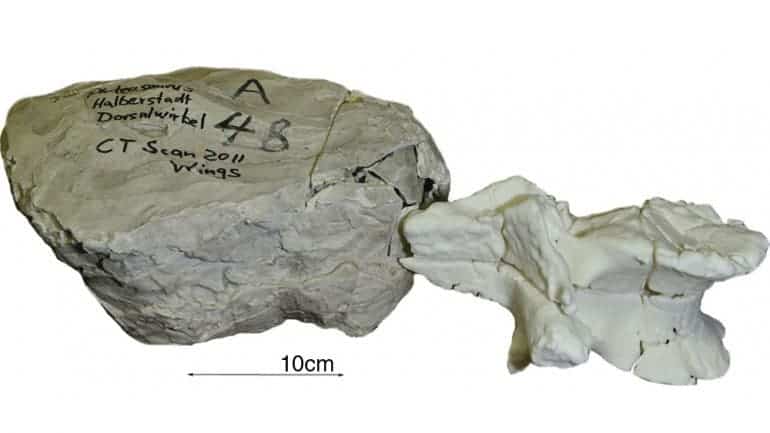- Most fossils are very fragile, difficult to handle and transport
- Researchers conducted CT scans on fossils still trapped in sedimentary material, creating 3D models
- The models were then 3D printed – an accurate, non invasive method to replicate fossils for schools, museums and other researchers
Doctors and dinosaurs
Being a paleontologist and working with dinosaur fossils is a rewarding, but tough job. You have to work with a very limited amount of fossils, it’s difficult to share them with researchers from other sites of the world, and the samples are very fragile – making transportation quite risky. But researchers have found a way to work around that problem: 3D printing dinosaur bones.

Researchers at Berlin’s Charité Campus Mitte have combined data from computed tomography (CT) scans with 3D printing technology to make it possible to print any number of accurate 3D reproductions from virtually any dinosaur (and not only) bone, without any negative effect on the original sample.
Valuable fossils are often stored in protective jackets (or casts), from which they are removed only when they are actually studied. The removal of the plaster and the sediment surrounding it could result in loss of material or significant deterioration. Quite often, you find fossils clumped in material from which it is very difficult to safely remove them, so this is a big problem.

A research team led by Ahi Sema Issever, M.D., has found a way to gain access to a fossil’s secrets without destroying its protective environment – they took an unidentified fossil from the Museum für Naturkunde in Berlin (the natural science museum), and subjected it to a CT scan with a 320-slice multi-detector system. The bone and surrounding material have very different radiation absorption rates, so the team was able to construct an accurate depiction of a fossilized vertebral body. The CT scan itself provided valuable insights not only helping paleontologists identify it, but also providing information about its condition and integrity.

But the team didn’t stop here. They used the CT scan to produce a 3D model that was printed using selective laser sintering, an additive manufacturing that uses a powerful laser to fuse together powder material in the desired shape and size; basically, they 3D printed it.
This method has two major advantages: you don’t have to remove the fossil when it is tightly attached to its surrounding material, thus eliminating the risk of damage to the fossil, and you can make as many copies of it as you want. This is much less time consuming than traditional fossil replication and makes it possible for museums, schools and other institutions to share unique fossils, without letting the original out of their hands.
“Just like Gutenberg’s printing press opened the world of books to the public,” says Dr Issever, “digital datasets and 3-D prints of fossils may now be distributed more broadly, while protecting the original intact fossil.”
Scientific Reference: Reviving the Dinosaur: Virtual Reconstruction and Three-dimensional Printing of a Dinosaur Vertebra. René Schilling, MD, Benjamin Jastram, Dipl-Ing, Oliver Wings, Dr rer nat, Daniela Schwarz-Wings, Dr rer nat, Ahi Sema Issever, MD


